Is burning fat and keeping it off as simple as moving more? Is the solution to the entire obesity crisis getting off our butts? Well, yes and no. Yes, moving more is part of the answer. But no, moving more is not “the one magic thing” by itself. Burning more is only one side of the energy balance equation. More exercise will help, but it will never be a crutch for poor nutrition. For guaranteed results, we need to work on both sides of the equation – eat right AND move more. But there’s one huge part of burning more that most people ignore…
The Massive Calorie Burning Potential That Most People Are Missing
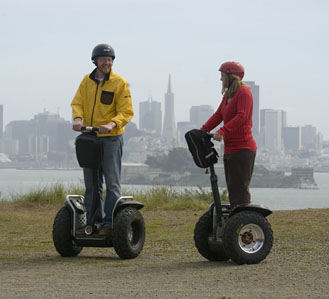 When most people think of burning calories, they only think of working out in the gym. What they fail to consider is the amount of calories they’e burning – or not burning – the rest of the day (non-exercise activity thermogenesis, or NEAT).
When most people think of burning calories, they only think of working out in the gym. What they fail to consider is the amount of calories they’e burning – or not burning – the rest of the day (non-exercise activity thermogenesis, or NEAT).
Over the last century, we’ve become a profoundly sedentary society. Cars, computers, elevators, televisions and all kinds of labor saving devices have almost all of us moving less, all day long. We have gone from a primarily agricultural and physically-laboring society to a desk-bound knowledge and technology society.
All day long we move from chair to chair and find ingenious ways to avoid exertion.
Our daily calorie burn has dropped so much, it’s not always easy to counterbalance it with “formal” gym workouts that are only an hour or less, several times per week. Combine that with being surrounded (and tempted) by food almost 24-7 and it should be no mystery why we have a body fat problem.
For the last few months, I’ve been experimenting with a FitBit – a fancy pedometer that tracks your steps, makes you more aware of NEAT and encourages you to get off your butt and move more. I reviewed the Fit Bit in my last Burn the Fat Blog post and gave it a thumbs up, but that was just a product review. This post is about the bigger picture: how can moving more help solve the body fat problem today?
Are Pedometers and Calorie Tracking Gadgets Really Effective Motivation Tools?
First question: Will a Fit Bit be effective as a motivation tool? I suppose it depends on your personality. It was beneficial to me, which might surprise many people because I’m already a fit and motivated guy; I don’t need any one (or anything) nudging me to work out and I know how to balance training and nutrition to achieve any kind of shape I want.
But, as I mentioned in part 1, several years ago, I had a career shift that took me from fitness trainer to fitness writer. Alas, I had become what fitness experts now call an “active couch potato.” I was training hard in the gym, but spending the rest of my time in front of a computer – lots of 10, 12 or even 15 hour days.
One of the ways these gadgets are motivating is through awareness. You can’t solve a problem if you don’t know you have one, right? Even with all my prior fitness knowledge, when I started tracking my activity, I had some surprising revelations.
Since using a fitbit, I found that on days I didn’t go to the gym and I didn’t even leave the house, my step count was extremely low. On those days, I only accumulated 3,000 to 4,000 steps.
One day, just as an experiment, I wanted to see exactly how FEW steps I could walk. It was a day I didn’t go the gym and didn’t leave the house. I confined myself to my desk and dug into one of my writing projects. 990 steps. That actually wasn’t easy. I had to force myself to sit still.
The big A-HA moment however, was during one of my weight training workouts…
On the first day I had the fit bit with me in the gym, I checked it after the workout and saw that I had taken 1800 steps in under an hour. No, not on the treadmill – just walking around the gym between sets. I thought that was interesting, so the next workout I intentionally walked around between sets as much as I could, instead of resting.
I used to shoot the breeze between exercises, or sit on the edge of a bench and catch my breath between sets of squats. This time, I kept walking around, only stopping when my training partner needed a spot and it was time for my set. It drove my training partner crazy…
“Will you sit still, dammit?” He yelled, “You’re as hyper as a crack addict! Stop, you’re making me dizzy!”
I didn’t stop. In 55 minutes, I added 2900 steps just from pacing the gym floor between sets of weight lifting instead of sitting on the bench doing nothing.
Most people familiar with this subject are now thinking I’m heading down the road of ,”Just add X extra steps a day” or “just walk 10,000 steps a day” and you’ll get leaner from that alone. While that’s likely to be true, my mind was darting around in other directions.
The Shocking Truth About Your “Genetically Inherited” Body Type
It was the “crack addict” comment that did it. It made me picture the skinny junkie who can’t keep weight on, who is hyperactive and can’t stop twitching and pacing. That in turn, reminded me about the somatotype concept of ectomorph versus endomorph- the “naturally” skinny person version the “naturally” heavy person.
Most people think of being an endomorph as a genetic thing – a body shape you were born with. They feel it’s out of their control and so they often feel powerless and may give up or not even try. But maybe part of endomorphy is that you’re genetically predisposed – not to be fat for no reason – but to be fat because your natural predisposition is not moving much. In other words, you gravitate – without even realizing it – to a low level of non exercise activity thermogenesis (NEAT). The ectomorph who can’t gain weight is the exact opposite.
If it’s true that an endomorph’s excess weight is largely due to not moving as much as their skinny, fidgety ectomorph counterparts, this is good news, because activity is something you control Most endos are completely unaware of how sedentary they really are – all day long. Endomorphssimply need a wake up call: GET MOVING!
A NEAT, New Fat Loss Paradigm
The problem is most people are focusing only on exercise activity and giving no thought to non exercise activity, when you should really pay attention to both. Why not start thinking about fat loss like this:
Old paradigm: Nutrition + exercise
New paradigm: Nutrition + formal exercise + non exercise activity.
Now you have 3 parts of the energy balance equation to play with – 1 on calories in side and 2 on the calories out side.
If you could ramp up BOTH on the calories out side, what kind of advantage would you have?
What if you had THREE points of energy expenditure you could ramp up: weight training (formal exercise), cardio training (formal exercise), non exercise activity?
If I could add 2900 steps – an extra 1100 above what I was doing before – with something as simple as walking around between sets instead of sitting on the bench – in under an hour – what could someone accomplish in an entire day with all the accumulated increased activity, and how would that add up over the weeks, months and years? Could that be what a skinny ectomorph really is? NOT a genetic anomaly per se, but a person always moving; who can’t stay still?
So many people are focused on that brief workout – 30 minutes or 60 minutes per day and thinking that one workout is the end all be all of their daily calorie burning. Meanwhile, the total of calories burned from the accumulation of little activities in the waking portion of the other 23 hours of the day has the potential to dwarf what was burned during the workout.
Why is this so ignored? One reason is because a little more each day doesn’t lead to fast weight loss. Sometimes, it’s so slow, the effects are imperceptible in the short term, and yet this could be one of the MAJOR factors that determine whether a person is thin or obese in the long run. Think about it: A river carving it’s way through rock is slow too, but the end result is a magnificent canyon.
Think about how you could increase activities throughout the rest of the day, ignoring the fact that each of them is moving just a little and thinking about how it will add up to a lot over time.
I live on the 6th floor and yes, I have for years used the elevator most of the time. Now I’ve started taking the stairs about 80% of the time. 100 steps up,100 steps down, two or three times a day. Call it another 500 steps a day, plus extra calories burned from the stairs up.
What about errands? My town is one square mile: all walkable. Are you in a similar situation? Do you drive to the store, just blocks away, once a week? Could you walk two or three times instead?
What about cleaning or yard work? How active are you around the house?
How often do you get up from your chair during the day? Could you do some of your work at a standing workstation or even a treadmill desk?
NEAT research on the 10,000 steps a day goal
When I was writing my 2nd book on fat loss, The Body Fat Solution that was the first time I started doing in-depth research on the impact that NEAT has on your total daily calorie burn. One study from the American Journal of Health Promotion really caught my eye. It found that in previously sedentary, overweight adults, subjects who met a 10,000 steps per day goal saw large improvements in body composition. Those who missed their goal did not.
Another study that raised an eyebrow was the one about the physical activity level of older order Amish culture, which has not fully adopted labor saving devices or modern lifestyles. A pedometer study published in Medicine and Science in Sports and Exercise reported that Amish men walked an average of 18,425 steps per day and women 14,195 steps. The average American logs in about 5,000 per day. That works out to about a 400 to 600 calorie per day difference, which is a really good approximation of how physical activity has changed as technology has advanced over the last century.
This is the interesting part: The Amish have the lowest obesity rate, and they don’t diet. Their foods were not low in carbs or low in calories – the fare included meat, eggs, gravy, potatoes, bread and even pies and cakes (shoo-fly pie anyone?) There you have another real world example of calories in versus calories out: The high activity level of the Amish (calories out) balanced their calories coming in.
In testing different ways to hit 10,000 steps a day (which is about 5 miles for the average person), I tried long single session walks versus multiple shorter walks, taking breaks from my chair and desk. I like long walks, especially when there’s nice weather and nice scenery like foresty hills, parks or along the shoreline. One walk, 10K steps. No problem.
But I noticed that while I sometimes enjoy long walks, the long walks can drag and they are hard to keep up consistently if you try to force yourself to do them every day as part of the “formal exercise.” On the other hand, multiple short walks and errands add up almost so effortlessly, you hardly notice it, but at the end of the day it all adds up just the same.
I found out that with my desk-computer job, hitting 10,000 steps required me to get up and go out of my way to walk a little extra, unless I was lifting AND doing cardio in the gym. I would not have known this without a pedometer. I could probably keep it up now without using the pedometer because my awareness has been changed. But the pedometer keeps me accountable and I have the personality that number tracking as always kept me motivated.
Consistency and Habit – the Real Keys To Fat Loss Success
The first month, I hit more than 10,000 steps per day average. The second month – it dropped to 6,000. Old habits die hard. And this is a real key to making NEAT strategy work: you have to make each added activity a new habit.
If you go hung ho and walk 20,000 steps for a few days, that’s great. If you take the stairs for a week, that’s great. But the only thing that counts is what you make a part of your new active lifestyle and keep up every day.
Look at those monthly averages to see how you are really doing. When you hit the point where your average step count has increased substantially month to month as a matter of new activity habits, that is when you’ll start to see the difference in controlling your weight. Otherwise your efforts are no different than any other short term fix.
My third month I got my count back up. I made it a habit to always get out of the house and walk, every day, no matter what. I found another simple way to bump the average up: take a very long walk or hike once a week. I know cyclists who do the same thing: once a week – a really long Sunday ride.
I also decided that once a month or so, I would see if I could break my step record walking. Last month I had a day with 45,000 steps. That was about 6 hours of walking plus miscellaneous activity. Earlier this month, I was in Northern California and took a day hike along the Pacific Coastal Trail: that was 52,839 steps and 432 floors (lots of hills). That was probably 7 or 8 hours of hiking, all together.
Before I started this “NEAT step experiment” a few months ago, I wondered whether the FitBit gizmo would end up just being a novelty. Would I just test it out for a while – merely to write a review on the blog or to be more informed about popular fitness products – and then it would get shelved?
Actually, no. Using a fitbit, I not only became newly fascinated with step counts and and re-interested in NEAT. I also found it remarkably motivating to hit a step count goal every day and even to occasionally go out to beat my record. I used the device – and still do -every day. One day, I realized it was not in my pocket for half the day (an active day). I was really irked and went out and clocked 10,000 more steps before the evening was over, just to “have the score on the board.”
Intense Training vs NEAT
None of this should be taken to imply that you shouldn’t train with intensity.
Another of my discoveries from this experiment so far is that I don’t believe casual or slow walking should completely replace high intensity cardio training, especially when there is a goal with a deadline. Walking is a great start for overweight men and women or beginners who haven’t developed the fitness level yet to push themselves really hard, and walking can help anyone add some extra calorie burn, but I’m convinced that if high intensity cardio can be included, it should be included.
It also goes without saying that the high intensity training beats low intensity training for time efficiency. Busy people just don’t have hours to walk every day – and it takes a lot of walking to equal the calorie burn of higher intensity cardio. There are also the cardiovascular fitness benefits of intense cardio. It’s mind blowing how much cardio fitness can be developed with very high intensity cardio training. This will never be equaled with low intensity cardio or walking.
I think the best all-around fitness and body composition program has a combination of training types; weight training first priority, formal cardio training second priority (at different intensity levels including high intensity), and non exercise activity (NEAT) third priority. What I would like to see in the fitness world is more attention given to NEAT and high intensity training advocates not dismissing the value of lower intensity exercise as part of the mix.
Conclusion
On paper, the concept of energy balance is simple, but in practice, balancing calories in versus calories out it easier said than done. Part of the reason is that most people have no clue about how many calories they burn each day and how inactive they really are. Most people think being an endomorph is some kind of genetic curse that they have no control over. They have no idea what NEAT is and how much it contributes to their level of fatness or leanness. Even those who do understand NEAT can’t manage it if they don’t measure it. Gadgets like pedometers provide the tool for awareness, measurement, management, motivation and accountability.
I have to admit, I tested out a pedometer for a few months partly for my readers but I also wondered whether walking more and tracking steps would be of any real value to someone like me – a bodybuilder – in terms of improving my physique. My answer after experimenting is, yes, of course it helps with fat loss. By bumping up my activity and walking – outside the gym – I definitely stayed leaner without dieting (I lost a pound the first month, without trying to).
However, don’t expect walking a little bit more every day to completely transform your physique. If you want a muscular, athletic looking physique, it’s the weight training that’s going to literally reshape your body and build the lean muscle; walking just can’t do that. Also, your nutrition is unquestionably the most important factor in the fat loss side of physique transformation. You can’t out lift, out train, out run or out walk a lousy diet.
The formula I always preach: weight training + cardio training + nutrition = body transformation. Add the “mental training / motivation” side and you have Burn the Fat, Feed the Muscle.
What walking more and focusing on NEAT more can do, is when added on top of weight training and high intensity training, it can help accelerate fat loss to a modest, but even higher degree on top of your formal workouts. I also think increasing step counts will provide a huge benefit if not be an ideal strategy – for weight loss maintenance for the formerly obese.
For many people, the best part is that short walks and increased activity throughout the day add up over time without feeling like work, let alone like torture. No, you don’t need to earn an “I puked” T shirt for completing your workout. You really can, as Dr. James Levine says, “move a little and lose a lot.” It just takes time, consistency and a new habit mentality – and as it turns out – technology for once, may actually help us get more active, not less.
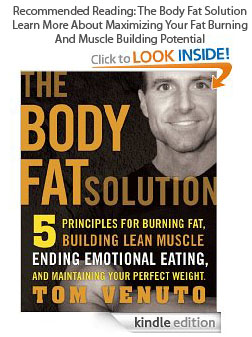
Fat Loss Resources:
Burn the Fat Feed the Muscle: Burn more, eat more: The fat burning techniques of bodybuilders and fitness models (ebook)
The Body Fat Solution By Tom Venuto (hardcover)
The Body Fat Solution by Tom Venuto (kindle)
Fit Bit (pedometer)



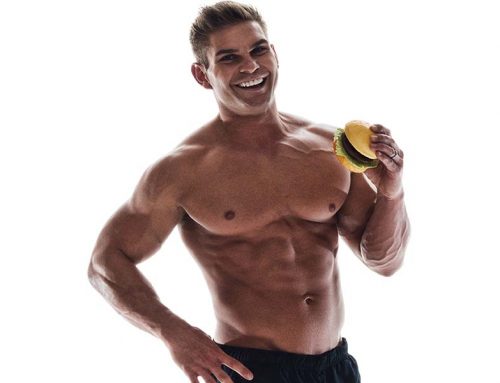
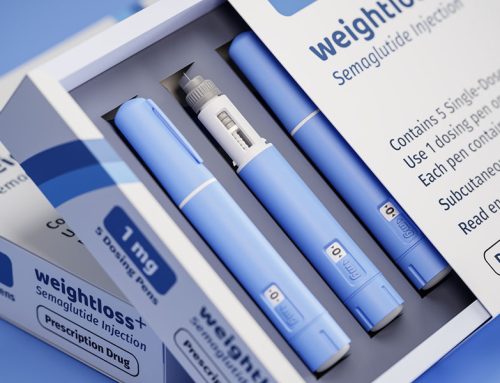
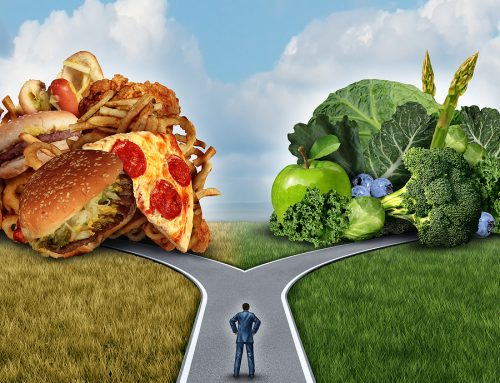
Good review and thoughts on the Fitbit and walking more. I am a big Fitbit fan combining cardio intervals or steady state runs 3 or 4 days a week, weight lifting 3 days a week along with at least 10,000 steps and 20 floors walking 6 days a week with the Fitbit. The extra walking is simple to pick up in the course of a day and an evening stroll with the dogs at the end of the day has a certain meditative quality to it that helps with sleep.
One other suggestion on maximizing walking, when I am actually going for a semi serious walk, ie putting on walking shoes and planning on doing a couple of miles, I usually put on the heart rate monitor too. The extra effort to walk in a cardio zone is minimal, just a little more effort, but it is helpful in maintaining a good cardio base. Also, wear the Fitbit and heart rate monitor mowing the lawn, raking leaves, washing and waxing the cars, vacuuming and mopping the floors (seriously) it only takes a little more effort to keep moving at a rate that you rack up the steps, floors and miles and time in cardio training zones.
I am a desk bound person, but I moved to a stand up desk that helps rack up more steps/movement. I keep meaning to get a treadmill desk.
The scriptures say, ” Through small and simple things, great things come to pass.”. I believe this is one of those small things that when done consistently, will make great things happen.
Tom, Your hardcover helped me go from 224+ to 165 lbs by following your advice and web posts. I’ve even blogged about you urging artists who read my blog to follow your advice. (See Fri. Feb. 12 2010) I just passed age 81 and body fat is under 14%.
About a month ago I began to add Leonard Schwartz’ HEAVY HANDS WALKING to working out at the Fitness Center and find it’s great for someone my age. Google “Schwartz heavy hands” and let us all kinow what you think.
Very familiar with Dr. Schwartz. He was profiled in one of my earlier books (2005), fit over 40 (www.fitover40.net); he was in the age 70+ category.
Many of our readers are also fans of using weighted vests
thanks for posting and great job with that drop in weight and body fat
T.
LOVE THE POST! IT MAY STRONG ENOUGH TO SPARK A TOTAL RECALL BUT IT’S STRONG ENOUGH TO LIGHT UP MY BIRTHDAY WISH (: SOME PEOPLE JUST WANT TO LOOSE WEIGHT AND WATCH THE NUMBERS ON THE SCALE DROP.OTHER PEOPLE TO RESHAPE THEIR PHYSIQUES (: AND SOMETIMES WE ACTUALLY NEED TO GAIN MUSCLE MASS IN ORDER TO LOOK THE WHEY WE DESIRE (: SOME OF US NEED TO GO *UP* SOME OF NEED TO GO *DOWN* (: AND BALANCE IS FOUND IN KNOWING EXACTLY WHAT FLOOR YOU AS AN INDIVIDUAL NEED TO GET *OFF* ON (: FMHTY *GOD BLESS YOU!! (:
The Amish/average-American comparison answered something I’d been thinking about recently. In fact, I was wondering if research would find a big difference not only in portion size and calorie intake between the 1950s and now, but also in calories burned daily.
It would be interesting to know if for the average American 60 years has resulted in the same difference in steps per day as now exists between our society and more agrarian ones – not only the Amish but those in other countries and cultures.
TV couldn’t take up 8 hours a day of anyone’s time back in the 50s. Children and adults seem to have spent a lot more time outdoors, or inn leisure pursuits that involved more movement than passive viewing.
I’d bet an evening of competitive bridge, though a sit-down game, between fidgeting, shuffling, card handling, tension and getting up and down for drinks and breaks, nonetheless burned more calories than an evening snoozing in front of Jack Benny. An afternoon around the piano would have to give one a better cardiovascular workout than the most exciting movie, wouldn’t it? Not to mention the yoga-like benefit of rhythmic, group breathing.
The automobile hadn’t yet completely overrun the landscape. People didn’t hop in the car for short trips as often, whereas now they think a mile is impossibly far. (In their defense, I will say the design of our “communities” and cities has become almost hostile to walkers and bikers, something that needs to change if we expect overall health to improve.)
The reason I was pondering all this? No, not some profound philosophical moment. I had to sell my car, and for the last few months have been dependent on public transportation. I live in San DIego, thankfully, where the San Diego Trolley makes that easier and more pleasant than in most locales.
I didn’t want to sell the car. Reality being what it is, I had no choice. I had a pang of sadness as it drove away, felt very flat without my little blue companion of five years. Rationally I knew it solved most of my remaining financial problems…no more payments, registration, smog checks, insurance, or expensive gasoline. (I’m not commenting to report on the monetary angle, but I hadn’t realized how much the car was costing me until it was gone. It’s insane.)
The next morning, I walked to the trolley stop…and unbelievably, I haven’t missed the car since. Haven’t missed the traffic, the tension, the delays, the road rage. I found I was feeling better each day.
Oh, sure after the first couple of days, I was a little sore. Maybe more than a little. A number of things had made me gradually stop working out or exercising much. Ramping up literally overnight to all-day compulsory walking and stair climbing, plus a regular Weight Transport Routine was a mite difficult. (WTR = lugging all purchases up to a mile. It’s amazing how heavy a two canvas bags of groceries can get. Especially when you temporarily forgot you were carless, and too late wonder if perhaps you shouldn’t have bought 2 gallons of milk, the canned goods, and an on-sale watermelon the same day.)
I’ll be honest: physically, the 4th day was hellish. I had a job in one of the hottest parts of the county. As the temperature hit 97, with no humidity noticeable, I was walking not quite a mile from the trolley to the job, down one of our country’s numerous “Strip Mall” avenues: a blazing, unshaded expanse of concrete, asphalt, and bad architecture.
At the job site, I found no one had ever documented the network I was asked to troubleshoot. As a result I walked, climbed, shimmied, and crawled what felt like 5 miles, through dust and wiring, dodging salesmen in a hurry, blocked now and then by an ever-changing maze of motorcycles, breathing exhaust fumes from the repair shop. Four hours later, temperature still over 90, I started back to the trolley…
You get the idea. The thing is, as miserable as the first week was (for more reasons than adjusting to life without instant, unlimited transportation), I did genuinely feel better and happier than I had in months. I had become someone who would drive a quarter mile rather than walk. As skewed and couch-potato-ish as anyone, even though I don’t watch TV. Sitting with my laptop all evening was no better, even if I was working…and half the time I wasn’t.
Now? Without planning to, I’ve lost 10 pounds. My large belly (I’m one of those types, your basic Pear) is verging on flattish without my having to suck it in so hard I pass out. I don’t get sore anymore. My legs have trimmed down to the point they surprised me, it looks and feels like at least an inch gone on each thigh, and my calves are starting to whisper there might be muscles in them after all.
The more I get out, walk, get back to my old habits, figure out how to trolley, bus, and walk – safely – wherever I need or want to go, the more I find I want to be active. Yesterday I passed by the workout room on my way to work, and regretted I didn’t have time to at least get on the elliptical a little first. A few days ago, I missed bench pressing. Meeting and chatting with all sorts of people is an added benefit, educational and very, very entertaining. Real life is indeed stranger than fiction, and the dialogue you couldn’t invent.
So this blog entry popped up in my mailbox at the most serendipitous time. It inspired me. Can I take more steps each day? Yes, that I can do. I can manage that.
I have an awful lot of steps to take you see; not all of them as simple as putting one foot in front of another in the amazing controlled fall we call walking. Your article made a difference today by sharing the confident assurance those extra steps DO make a difference. CAN help change things completely. For the better.
Assuming I stop sitting here typing and get my butt out the door :-)
Cheers, KC
KC,
I found Tom’s article to be timely also however your story is something I can relate to. I don’t feel ike I’m alone or the only one silly enough to be doing this so thank you. I also enjoy the walk now my fitness has improved and my leg muscles have become accustomed to it but ger it did hurt each day for the first few weeks. I felt like I was walking bow legged. My time has reduced as I’m walking faster so I stop off at the shops most days to get a bag or two of groceries which means no shopping on weekends for groceries..thank goodness.
Thank you KC for sharing your story. I too will start wearing a pedometer to monitor and increase my steps.
Mel
As reported, within the Amish culture, men and women walked more steps per day than the average American (or Australian), resulting in no obesity or obesity related diseases. Did the study identify if the community participated in more intense training, cardio or weights etc.
My understanding is older culters didn’t partake in intentional aerobic exercises or weight training. I mean historically, people didn’t go for a run or did situps or pushups.
High society European women for example. Probably the least active, they still indulged in carbohydrate food, breads, biscuits, cakes, wine, etc., yet they didn’t seem to have a problem with obesity.
How did they do it?
Another time-efficient way to boost NEAT: use a bike with panniers for your errands. Most stores you go to regularly are likely within a few miles, and by avoiding traffic and parking it’s about the same amount of time.
Only problem for pedometer fans, it doesn’t add to your step count. But as a bodybugg user I can say that going 3 miles to the grocery store can easily burn a few hundred extra calories.
I love my panniers! I consider myself very lucky to be able to bike or walk about 80% of places that I go, car traffic is awful and parking is worse. On bike, I always park right in front, no hunting for a spot. It does add up – a few miles on the bike to farmers market or work shuttle or other errands, the walk for groceries. I only have to get in car one or twice per week, and I don’t work or do anything at home (other than cook and sleep).
I agree with this totally, funny thing about the Fitbit, I used it, got addicted to it. Wore it to Hot Yoga and burned it out with sweat, they replaced it and then I lost the new one in one of my bounding around the house moves in order to get more steps.. still can’t find it and don’t want to spend the money again..But I do know that on certain days, to run up and down the stairs if I haven’t been active enough. So just keep moving, moving, moving!!
Tom,
First of all I life your articles, always a great read. I have many of your emails I have not yet read and every once on a while when I have time I go back and read them.
I work 5 10 hour days a week. Roughly an hour travel time to and from work. I train 5-7 days a week, doing a total house renovation for myself and of course have trouble finding time to keep up with the daily riggers of cooking, cleaning, ect. Have you ever considered making an audio version of your books? It makes perfect sense too me for your followers and the promotion of an active lifestyle. I think there would be a great market for this!
there already is an audio version of body fat solution – its on itunes, audible and amazon. Burn the fat, feed the muscle is coming soon (but will be self published – will NOT be on itunes)
Holy crappy typing on phone batman! ^^^ insert words that make sense. Lol
Hi Tom,
Thanks for all your support! Really appreciated!
About the fitbit and the website tools…is it possible to tracke body fat % on it?
Thanks
`jasper
I dont really use their website tools that much, but I know you can track body weight. Not sure if you can track body fat. The progress tracker we are building at the burn the fat inner circle though WILL have tracking for weight AND body fat. That doesnt go into production until we finish ourmeal planner software, which is in beta right now.
I am going to try the pedometer. Typically I spend 15 hrs per day at my PC.
A perfect wrap up of the series :)
I tracked my steps the last ten days (my average is around 12k) and was just about to retire the pedometer coz it’s actually an old cell phone that has built in pedometer feature and I was really getting sick of dragging it with me – but I’ve changed my mind after reading this post :)
I really need to keep myself accountable longer in order to make moving more a habit
Thanks Tom :)
PS I like this part the most:
<>
So true and so empowering.
Oops, it won’t show the part I copy – pasted. Anyways, it was the part about the old and new paradigm :)
COMMITMENT INTEGRITY and PERSEVERANCE
Tom, I have thoroughly enjoyed reading your review on the fit Bit and how it made you more in tuned with how much you are moving in a day. I like how you said that nutrition + formal exercise + non exercise activity is a new exercise paradigm. I totally agree and its a goal I am working for. I am a endormorhph who has been struggling to lose body fat in spite of working out 6 days a week. I think a little more movement outside of my exercise routine can likely help me a lot, especially after reading this. Thanks for sharing. Keep it coming!
Tom,
this kind of irks me that you and the rest of the world ALWAYS assume that it must be because we “endomorph’s excess weight is largely due to not moving as much as their skinny, fidgety ectomorph counterparts, this is good news, because activity is something you control Most endos are completely unaware of how sedentary they really are – all day long. Endomorphs simply need a wake up call: GET MOVING!” In other words, since I’m overweight, it most certainly be my fault, or I am lazy. Please help me understand why I, a 43 year old woman who works out 4-5 times a week, boxing, heavy cardio and weight resistance training, eat NO processed food, no sugar, lean meats,fruits and veggies, work 3 jobs(one is at a desk, the other is SERVING, on my feet, walking thousands of steps)and STILL I cannot get under 200 pounds. Do you have any idea how frustrating it is? And then, I read an article to try to get a little more guidance and uinderstand if I can do anything additional(which would be REALLY difficult to fit into my already bursting at the seams schedule)and find out…A-HA, it makes perfect sense!! I need to move more…..I’m FAT because I’m LAZY!! Thanks Tom
Amy. I understand your frustration. But I think you’ve put words in my mouth and put your own spin on this article. You cant point to the place where I have used the word lazy or where I have exclusively said that a person is fat because they are lazy because i didnt say that. A person gets fat because there is an energy imbalance. Thats very different than saying “lazy.” In one sense what ive written is the opposite. NEAT can be consciously increased, but little movements all day long (or lack of movement) is typically very unconscious behavior. Most people who are inactive dont realize how inactive they are. It doesnt become conscious until they start tracking it with something like a pedometer, etc. I also didnt say “always” or “everyone.” I said “MOST endos” – which I think is very safe to say. High body fat / and obesity are complex problems with many causes. for many people, not enough activity is one of the causes. but It is not THE (only) cause.. which i mentioned, right in the first paragraph. If youre already active, keep up the great work – pat yourself on the back – you’ve got the activity and training side of the equation handled. For other people who didnt realize how low their NEAT and daily steps were, this could be a revelationand it could be an easy way to get the fat loss moving. But each persons situation is different. More and more and more training isnt always better. And youre right – even if it were, its not always practical. Sometimes you have to assess your situation and look to other causes and other solutions, keeping in mind that energy balance equation is always there and you can work it from a lot of different directions. If i were you, In the spirit of the advice in this article, Id be using some apps or gadgets or accountability / awareness devices to track your calories IN – not just food quality – but food quantity.
Great article. Some people feel like they can workout 3 times a week and still eat all the junk food they want. You have to find the right balance between exercise and eating right to lose weight.
This article is very informative! I learned a lot! Thank you for sharing it.
Actually this makes A LOT of sense. I am actually doing something a little bit like this for my workouts (the walking instead of sitting after your lifting sets). I’m glad I had the right idea xD
[…] count. I head for steep hills that are close to my house and walk up and down twice in 15 minutes.I usually find it easier to take three or four 10- or 15-minute walks each day. Do I get any health …nding short walks easier to fit in than one long one. Recent research suggests that not only is this […]
Great article read here. I have never used any gadgets like pedometers.
I may look into Fit bit, sounds interesting.
I have made a habit to move around as much as possible. I live near the town centre, so I always walk to town at every opportunity. My walk to town includes walking on steep road.
Brilliant Article, Tom! This is one of the articles that inspired me to get my fitbit! I have used it ever since, and it’s been great for tracking exactly how many calories unplanned bouts of activity actually add up to! It can often be much more than you realize! I now use it on purpose, and am able to plan my intakes around how many calories these walks will be! Has been a seriously effective tool!
On a completely unrelated side-note though, I couldn’t help but wonder how they got a technology hating Amish culture to wear (electric) pedometers! lol.
Spot on Tom!
Without knowing the exact word for it until now, I’ve always been doing a variety of different NEAT activities. I now know that even though I am mostly an ectomorph, the NEAT has a hefty impact on body composition.
Even so, I am through a year’s time of experimenting with high NEAT days (lots of standing and casual walking) combined with a slightly higher calorie intake on a regular basis. I do upper/lower body split with light days. The results are positive and measurable, still with a goal of fat loss and a minimum of muscle loss.
Also, in the morning, the only time when I actually sit down, is in the car to work. I love preparing and eating healthy meals, especially breakfast while standing. Groceries are 15-20 minutes of easy, fresh walking away and the car doesn’t get warmed up properly anyway. I’ve read somewhere that standing and moving around lightly also improves digestion.
In the end – and as you also mention Tom, the real results will appear when a person accepts, embraces and adopts NEAT as a habit, a way of life, rather than growing accustomed to the path of least resistance (elevator, short car trips, my rain coat/umbrella is too far away, etc).
It’s THE lifestyle!
-Chris
Btw. I think You got me sold on a pedometer!